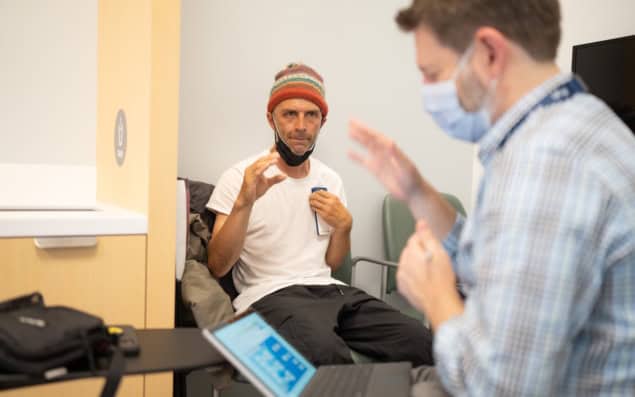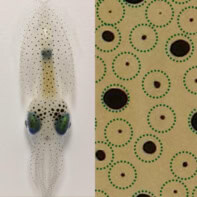
Deep brain stimulation (DBS) is an established treatment for patients with Parkinson’s disease who experience disabling tremors and slowness of movements. But because the therapy is delivered with constant stimulation parameters – which are unresponsive to a patient’s activities or variations in symptom severity throughout the day – it can cause breakthrough symptoms and unwanted side effects.
In their latest Parkinson’s disease initiative, researchers led by Philip Starr from the UCSF Weill Institute for Neurosciences have developed an adaptive DBS (aDBS) technique that may offer a radical improvement. In a feasibility study with four patients, they demonstrated that this intelligent “brain pacemaker” can reduce bothersome side effects by 50%.
The self-adjusting aDBS, described in Nature Medicine, monitors a patient’s brain activity in real time and adjusts the level of stimulation to curtail symptoms as they arise. Generating calibrated pulses of electricity, the intelligent aDBS pacemaker provides less stimulation when Parkinson’s medication is active, to ward off excessive movements, and increases stimulation to prevent slowness and stiffness as the drugs wear off.
Starr and colleagues conducted a blinded, randomized feasibility trial to identify neural biomarkers of motor signs during active stimulation, and to compare the effects of aDBS with optimized constant DBS (cDBS) during normal, unrestricted daily life.
The team recruited four male patients with Parkinson’s disease, ranging in age from 47 to 68 years, for the study. Although all participants had implanted DBS devices, they were still experiencing symptom fluctuations that were not resolved by either medication or cDBS therapy. They were asked to identify the most bothersome residual symptom that they experienced.
To perform aDBS, the researchers developed an individualized data-driven pipeline for each participant, which turns the recorded subthalamic or cortical field potentials into personalized algorithms that auto-adjust the stimulation amplitudes to alleviate residual motor fluctuations. They used both in-clinic and at-home neural recordings to provide the data.
“The at-home data streaming step was important to ensure that biomarkers identified in idealized, investigator-controlled conditions in the clinic could function in naturalistic settings,” the researchers write.
The four participants received aDBS alongside their existing DBS therapy. The team compared the treatments by alternating between cDBS and aDBS every two to seven days, with a cumulative period of one month per condition.
The researchers monitored motor symptoms using wearable devices plus symptom diaries completed daily by the participants. They evaluated the most bothersome symptoms, in most cases bradykinesia (slowness of movements), as well as stimulation-associated side effects such as dyskinesia (involuntary movements). To control for other unwanted side effects, participants also rated other common motor symptoms, their quality of sleep, and non-motor symptoms such as depression, anxiety, apathy and impulsivity.
The study revealed that aDBS improved each participant’s most bothersome symptom by roughly 50%. Three patients also reported improved quality-of-life using aDBS. This change was so obvious to these three participants that, even though they did not know which treatment was being delivered at any time, they could often correctly guess when they were receiving aDBS.
The researchers note that the study establishes the methodology for performing future trials in larger groups of males and females with Parkinson’s disease.

DBS implant adapts to patient’s neural signals
“There are three key pathways for future research,” lead author Carina Oehrn tells Physics World. “First, simplifying and automating the setup of these systems is essential for broader clinical implementation. Future work by Starr and Simon Little at UCSF, and Lauren Hammer (now at the Hospital of the University of Pennsylvania) will focus on automating this process to increase access to the technology. From a practicality standpoint, we think it necessary to develop an AI-driven smart device that can identify and auto-set treatment settings with a clinician-activated button.”
“Second, long-term monitoring for safety and sustained effectiveness is crucial,” Oehrn added. “Third, we need to expand these approaches to address non-motor symptoms in Parkinson’s disease, where treatment options are limited. I am studying aDBS for memory and mood in Parkinson’s at the University of California-Davis. Little is investigating aDBS for sleep disturbances and motivation.”



